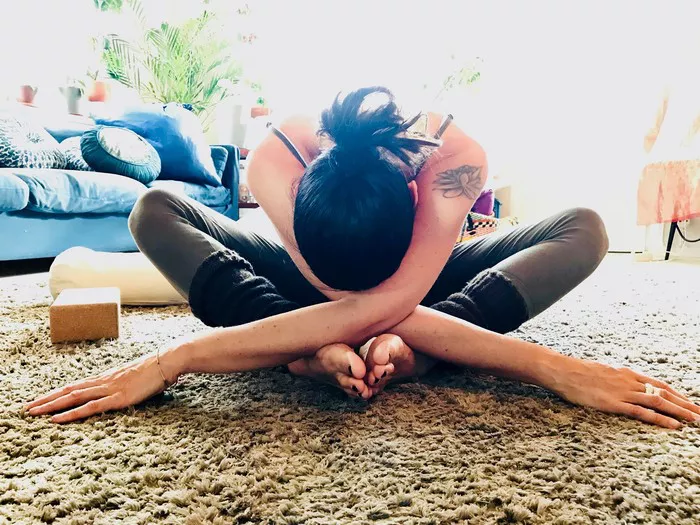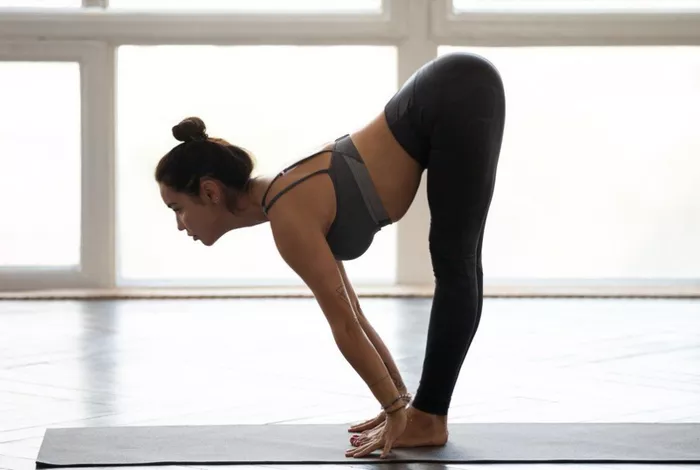Akhanda Yoga is a holistic and integrated approach to yoga that focuses on the balanced development of the body, mind, and spirit. Rooted in ancient traditions, yet tailored to meet the needs of contemporary practitioners, Akhanda Yoga offers a comprehensive and inclusive practice that encompasses various aspects of yoga. In this article, we will delve into the origins, principles, practices, and benefits of Akhanda Yoga, providing a thorough understanding of this unique and transformative approach.
Origins and Evolution of Akhanda Yoga
Akhanda Yoga was developed by Yogrishi Vishvketu, an internationally renowned yogi and teacher with over 40 years of experience. Yogrishi Vishvketu’s journey into yoga began at a young age in the northern Indian region of Uttar Pradesh. He was trained in the traditional gurukul system, which involved living with a guru and receiving personalized instruction in various yogic disciplines.
Yogrishi Vishvketu’s extensive study and practice encompassed Hatha Yoga, Raja Yoga, Kundalini Yoga, and various other branches of the yoga tradition. His holistic approach to yoga is deeply influenced by the teachings of Swami Sivananda, a prominent spiritual leader and founder of the Divine Life Society. Swami Sivananda’s emphasis on integrating the physical, mental, and spiritual aspects of yoga resonated with Yogrishi Vishvketu and became a cornerstone of Akhanda Yoga.
The term “Akhanda” means indivisible, unbroken, and whole. Akhanda Yoga reflects this concept by promoting a practice that is inclusive and all-encompassing, addressing multiple dimensions of human experience. Unlike styles of yoga that focus predominantly on physical postures, Akhanda Yoga incorporates a wide range of techniques to achieve a balanced and harmonious development of the practitioner.
Core Principles of Akhanda Yoga
Akhanda Yoga is built on several core principles that guide its practice and philosophy. These principles serve as the foundation for a holistic approach to yoga that nurtures the body, mind, and spirit.
1. Holistic Practice
Akhanda Yoga emphasizes the importance of a well-rounded practice that includes physical postures (asanas), breath control (pranayama), meditation, mantra chanting, and self-study (svadhyaya). By integrating these elements, practitioners can achieve a comprehensive and balanced experience that promotes overall well-being.
2. Balance and Harmony
Central to Akhanda Yoga is the idea of balance and harmony. This principle extends to all aspects of the practice, including balancing the body and mind, harmonizing the breath, and cultivating inner peace. The practice encourages practitioners to develop a sense of equanimity and resilience, enabling them to navigate the challenges of life with greater ease and grace.
3. Inclusivity and Accessibility
Akhanda Yoga is designed to be inclusive and accessible to people of all ages, backgrounds, and levels of experience. The practice is adaptable and can be modified to suit individual needs and abilities. This inclusivity fosters a welcoming and supportive community where practitioners can explore and deepen their practice at their own pace.
4. Self-Awareness and Self-Transformation
Akhanda Yoga places a strong emphasis on self-awareness and self-transformation. Through consistent practice and self-reflection, practitioners are encouraged to develop a deeper understanding of themselves and their inner landscape. This awareness serves as a catalyst for personal growth and transformation, enabling individuals to live more authentic and fulfilling lives.
5. Integration of Yogic Wisdom
Akhanda Yoga draws on the rich wisdom of various yogic traditions and texts, including the Yoga Sutras of Patanjali, the Bhagavad Gita, and the Upanishads. By integrating these teachings, practitioners can access timeless insights and guidance that support their spiritual journey and enhance their understanding of yoga as a holistic practice.
Key Components of Akhanda Yoga
Akhanda Yoga encompasses a wide range of practices that work together to create a balanced and comprehensive experience. These practices include asanas, pranayama, meditation, mantra chanting, and self-study.
See Also: What Is the Purpose of Yoga Nidra?
1. Asanas (Physical Postures)
Asanas are physical postures that promote strength, flexibility, balance, and overall physical health. In Akhanda Yoga, asanas are practiced with mindfulness and attention to alignment, allowing practitioners to cultivate body awareness and prevent injury. The practice includes a variety of postures, from gentle and restorative to more dynamic and challenging, catering to the needs of practitioners at different levels.
2. Pranayama (Breath Control)
Pranayama involves the regulation of breath to enhance vitality and mental clarity. Akhanda Yoga includes a range of pranayama techniques, such as Ujjayi (victorious breath), Nadi Shodhana (alternate nostril breathing), and Bhramari (humming bee breath). These practices help to balance the nervous system, reduce stress, and cultivate a sense of inner calm.
3. Meditation
Meditation is a cornerstone of Akhanda Yoga, providing a means to quiet the mind and connect with the inner self. Various meditation techniques are employed, including mindfulness meditation, guided visualization, and mantra meditation. Regular meditation practice supports mental clarity, emotional stability, and spiritual growth.
4. Mantra Chanting
Mantras are sacred sounds or phrases that are repeated to focus the mind and invoke positive energies. In Akhanda Yoga, mantra chanting is used to deepen the meditative experience and connect with the vibrational essence of the universe. Common mantras include “Om,” “So Hum,” and “Gayatri Mantra.” Chanting mantras can have a profound effect on the mind and spirit, promoting a sense of peace and connection.
5. Self-Study (Svadhyaya)
Svadhyaya, or self-study, is an essential aspect of Akhanda Yoga. This practice involves the study of sacred texts, self-reflection, and introspection. By engaging in svadhyaya, practitioners gain insights into their thoughts, behaviors, and patterns, fostering personal growth and spiritual development.
Benefits of Akhanda Yoga
Akhanda Yoga offers a wide range of benefits that extend to the physical, mental, emotional, and spiritual dimensions of health and well-being.
Physical Benefits
Improved Flexibility: Regular practice of asanas helps to increase flexibility in muscles and joints, reducing the risk of injury and enhancing overall mobility.
Enhanced Strength: Asanas build strength in various muscle groups, supporting better posture and physical endurance.
Better Balance and Coordination: The practice of balancing postures improves proprioception and coordination, contributing to greater stability in daily activities.
Enhanced Respiratory Function: Pranayama techniques promote efficient breathing patterns, increasing lung capacity and oxygenation of the blood.
Detoxification: The combination of asanas and pranayama helps to stimulate the lymphatic system and enhance the body’s natural detoxification processes.
Mental and Emotional Benefits
Stress Reduction: The integrated practices of Akhanda Yoga help to activate the parasympathetic nervous system, reducing stress and promoting relaxation.
Improved Mental Clarity: Meditation and breath control techniques enhance focus and concentration, leading to greater mental clarity and cognitive function.
Emotional Stability: The practice fosters emotional resilience and stability, helping practitioners to manage and process their emotions effectively.
Enhanced Mood: Regular practice of yoga has been shown to increase levels of serotonin and other mood-enhancing neurotransmitters, contributing to a positive outlook.
Spiritual Benefits
Deepened Self-Awareness: Akhanda Yoga encourages introspection and self-reflection, fostering a deeper understanding of oneself and one’s purpose.
Connection to Inner Self: The practice facilitates a connection to the inner self, promoting a sense of inner peace and fulfillment.
Spiritual Growth: Through the study of yogic philosophy and consistent practice, practitioners can experience profound spiritual growth and transformation.
Sense of Oneness: The holistic approach of Akhanda Yoga cultivates a sense of interconnectedness with the universe and all living beings, fostering compassion and empathy.
Akhanda Yoga in Modern Times
In today’s fast-paced and often stressful world, the holistic and integrative approach of Akhanda Yoga offers a valuable means of achieving balance and well-being. Its emphasis on inclusivity and accessibility makes it an ideal practice for people of all ages and backgrounds.
Akhanda Yoga has gained popularity worldwide, with practitioners and teachers sharing its benefits through classes, workshops, and retreats. The practice’s adaptability allows it to be integrated into various settings, including yoga studios, schools, workplaces, and healthcare facilities.
The growth of online platforms has also made Akhanda Yoga more accessible, allowing individuals to practice from the comfort of their homes. Online classes, videos, and resources provide a convenient way for people to experience the transformative benefits of Akhanda Yoga, regardless of their location.
Conclusion
Akhanda Yoga is a holistic and inclusive approach to yoga that encompasses physical, mental, emotional, and spiritual practices. Its comprehensive and balanced nature makes it a valuable tool for achieving overall well-being and personal transformation. By integrating asanas, pranayama, meditation, mantra chanting, and self-study, Akhanda Yoga offers a pathway to a harmonious and fulfilling life.
Whether you are new to yoga or an experienced practitioner, Akhanda Yoga provides a rich and diverse practice that can support your journey towards greater health, inner peace, and spiritual growth. Embrace the principles and practices of Akhanda Yoga and discover the profound benefits it can bring to your life.
Related topics:















